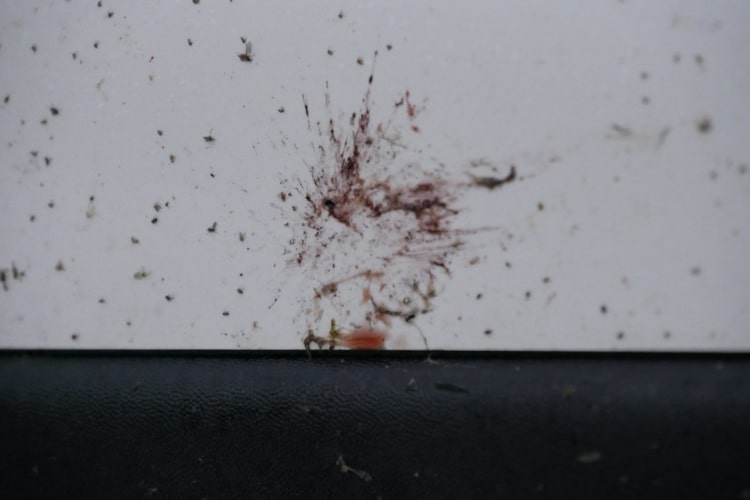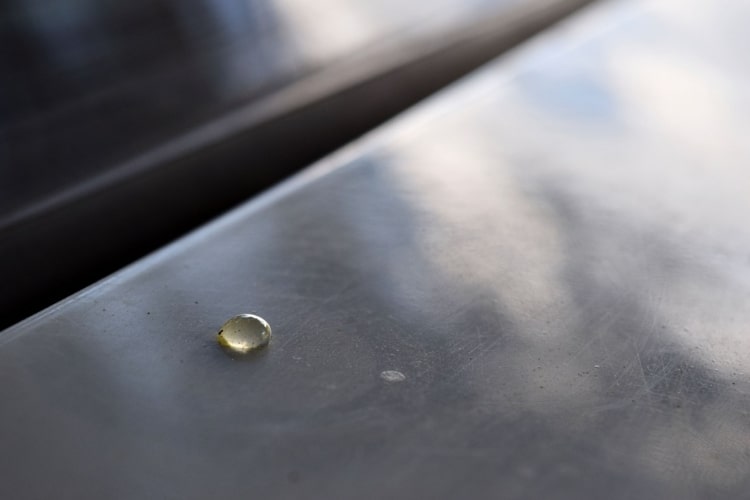Bugs, Road Tar and Tree Sap: It must be Summer!
Many motorists return from memorable summer road trips to find everything from the grille to the bumper plastered with bug residue, road tar and other contaminants. Your roof, hood and trunk may also host an unseemly collation of bird droppings and tree sap deposits.

Worse yet, these things adhere to your vehicle with stubborn persistence. Removal gets even tougher when contaminants get embedded in your clearcoat. Corrosive or acidic compounds may etch or stain your vehicle’s finish.
Contaminant Removal
303 Ultra-Concentrated Car Wash will do a good job of flushing away most surface debris. However, more work is often required.
It is possible to tackle difficult road tar deposits and bug residue with bug and tar removers. Since they often contain petroleum-based solvents, use them with care. You’ll want to rinse away any residue without delay.
Summer Car Care: Bugs
You know the look. All manner of flying insects plastered to the front of your vehicle, like mosquitoes, moths, bees and beetles. Some of these bug splats contain acidic material that’s may cause damage.
Summer Car Care: Bird droppings
Bird droppings often contain concentrations of a corrosive substance called uric acid. Some droppings contain damaging alkalis as well. These substances may soften your clearcoat, leaving an irregular finish that requires restorative polishing.
Summer Car Care: Road tar
Road tar is a common problem, particularly when asphalt roads soften in the summer heat. Applications of molten tar effectively fill road cracks, but it’s a hassle when this fresh tar gets on your vehicle.
Use tar remover by applying some to a soft cloth. Use a tight circular motion to gradually reduce the size of tar spots. Exert light pressure and let the chemicals do the work. Quickly rinse away streaks or any other residue.
Summer Car Care: Tree sap
In many regions, sap flows freely in the spring and early summer. Evergreens like pines and firs drip sap. One tree service suggests that decidiuous trees like maples, walnuts and birches also produce a great deal of sap.

Surface Restoration
There are various steps you can take to get your vehicle’s paint and other surfaces ready for an application of a premium protectant.
Claying
Thoroughly wash your vehicle using 303 Ultra-Concentrated Car Wash. Next, use a 303 Clay Mitt to tackle those stubborn, microscopic particles still embedded in the surface of the paint.
Polishing
When swirls and minor scratches remain, select a polishing compound based on the condition of the paint. You may also be dealing with difficult mineral deposits left by water spots. A variety of substances cause etching or staining of the surface of your vehicle’s paint. Since any polishing removes microscopic amounts of paint, you want to use the right product for the job. There are several 303 products to consider:
- Use 303 Compound (Step 1) for more extreme paint defects, including 1500-grit scratches.
- 303 Polish (Step 2) removes moderate paint defects, including 2000-grit scratches
- 303 Finishing Polish (Step 3) is perfect for finer 2500-grit scratches.
These products are for use on both single-stage paint and clearcoat finishes. You can hand apply these products, or you can use a rotary or dual-action polisher.
Protect for the Future
The use of clay and polishing compounds prepare the surface for a protectant. 303 Touchless Sealant features an advanced water-repelling formulation. It will bond to your paint, creating a barrier against future attacks by corrosive and acidic compounds. 303 Touchless Sealant takes far less time to apply than traditional wax, and it lasts up to twice as long.
Bug residue, road tar and other contaminants are a fact of life on the road. Apply 303 Touchless Sealant to your vehicle’s exterior to make contaminant removal easier in the future. Get more value from the product by using it on your window glass and wheels as well. You can also apply it to the gel coat on your boat or RV.






